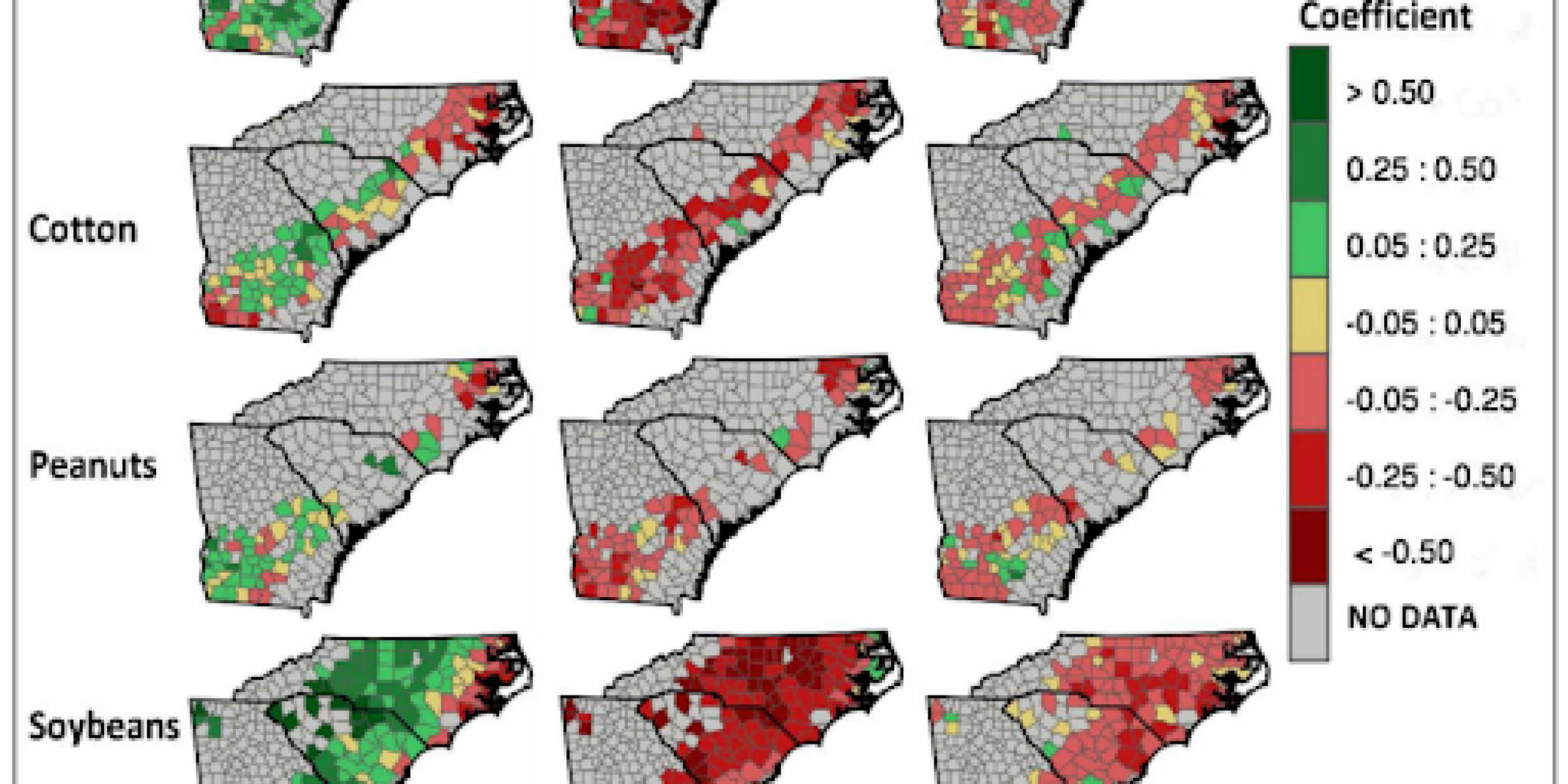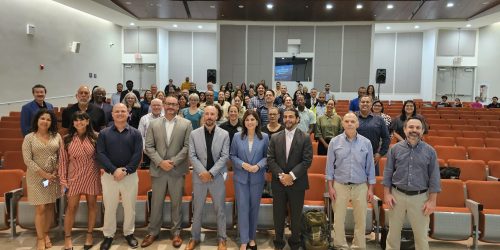The effects of climate variability and change pose numerous threats to America’s agricultural industry, much of which is located in the southeastern United States. However, there are gaps in understanding impacts at finer spatial and time scales. A recent study co-authored by the Carolinas Integrated Sciences and Assessments (CISA), a CPO Regional Integrated Sciences and Assessments (RISA) team, indicates that there is a significant association between monthly climate extremes and changes in annual crop yields in the Southeast—but the influence varies by location, crop, and growth stage.
Led by University of North Carolina students mentored by CISA, the authors investigated the impact of monthly maximum temperature, minimum temperature and precipitation extremes during growing season (May-October) on yield of corn, soybeans, cotton, peanuts, and sweet potato crops from 1981-2018 in Georgia and the Carolinas. Broadly, crops were particularly vulnerable to extreme daytime heat, especially corn, cotton, and soybeans during July and August, as well as excessive drought and late growing season (Sept-Oct) rainfall. However, county-level relationships between yield and climate extremes are heavily dependent on crop-type and the local geography. One particular threat is tropical cyclones which often bring a large amount of rainfall in a short period of time, especially to the region’s coastal areas. Each of these hazards – daytime heat, drought, and intense rainfall – are projected to become worse with anthropogenic climate change. This research sheds light on the varied susceptibilities of crops in the southeast United States so that future studies and planning can take these issues into account and examine how they will be exacerbated by climate change.









